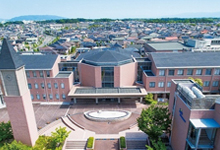A study by visiting researcher Kazuki Hayashida and professor Shu Morioka of Kio University's Neurorehabilitation Research Center found a positive correlation between the subjective human-likeness felt by stroke patients while walking and walking speed.
Stroke patients sometimes pessimistically describe themselves as "like a robot" or "not like a human being" while walking.Until now, it was unclear what factors contribute to the 'humanness' of stroke patients during walking and underlie these experiences.
Even if stroke patients are able to recover their ability to walk, it is often difficult for them to actually walk at the same speed as healthy people due to the effects of motor paralysis.We therefore hypothesized that walking speed was related to subjective human-likeness while walking in stroke patients, and investigated 32 stroke patients who participated in the study.
As a result, there was a positive correlation between the comfortable walking speed and maximum walking speed measured in the 10-m walking test, and the subjective human-likeness evaluated immediately after walking (evaluated on a 7-point Likert scale). was accepted.In other words, it was shown that subjective human-likeness tends to be perceived more easily by people with higher ability to walk fast (the slower the walking speed, the less likely it is to feel human-likeness).
Previous studies reported that the difference between comfortable walking speed and maximum walking speed in healthy elderly people was approximately 0.45 m/s. The velocity difference was about 0.23m/s.The narrow range between comfortable walking speed and maximum walking speed means that walking speed cannot be freely selected, and this also reduces the subjects' subjective perception of human-like walking. It suggests the possibility that it is one of the factors.
Since subjective aspects of human-likeness while walking may be one of the factors that hinder social participation, researchers will investigate the relationship between subjective aspects of human-likeness while walking and social participation in the future. are also conducting research.

